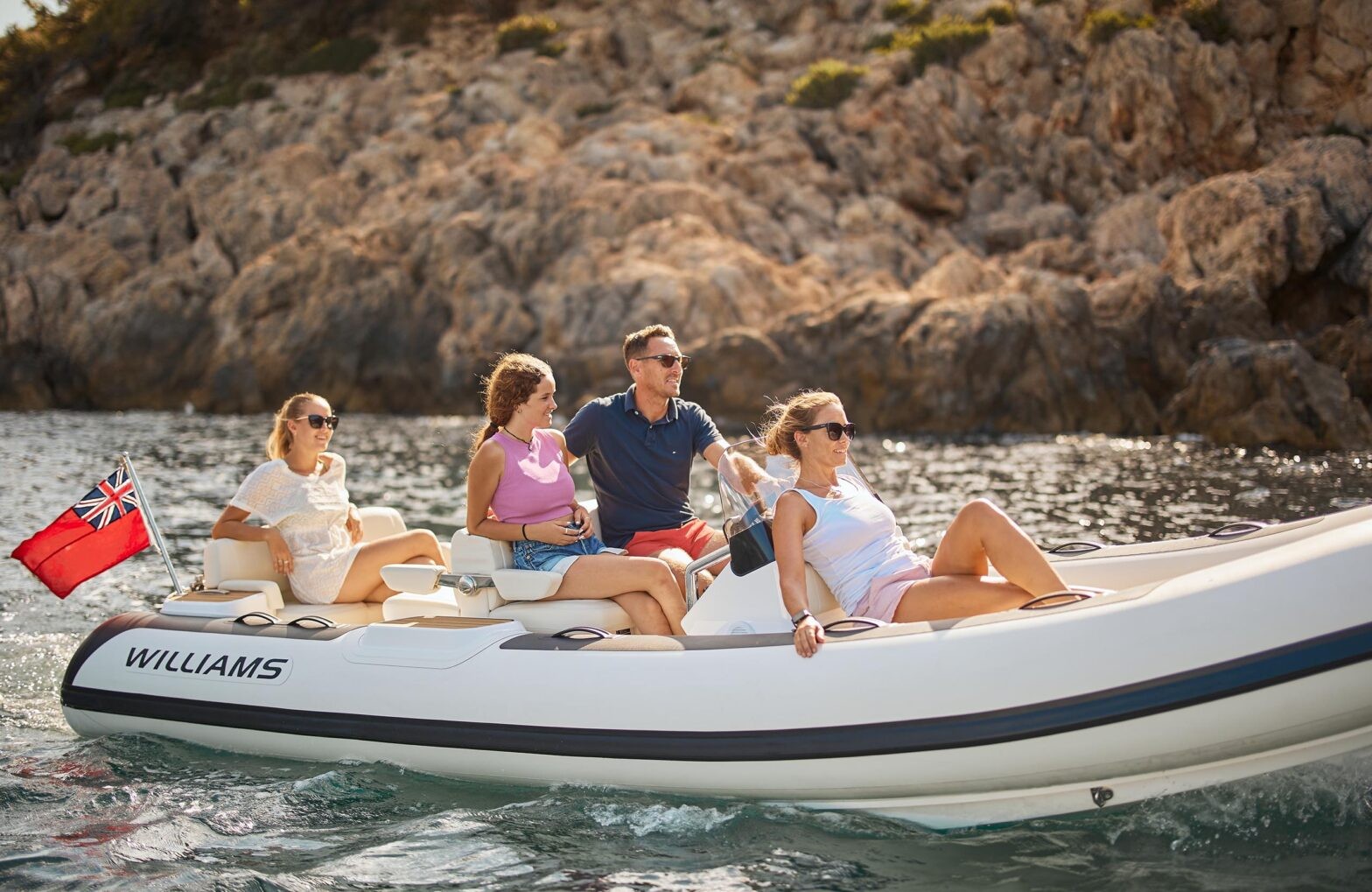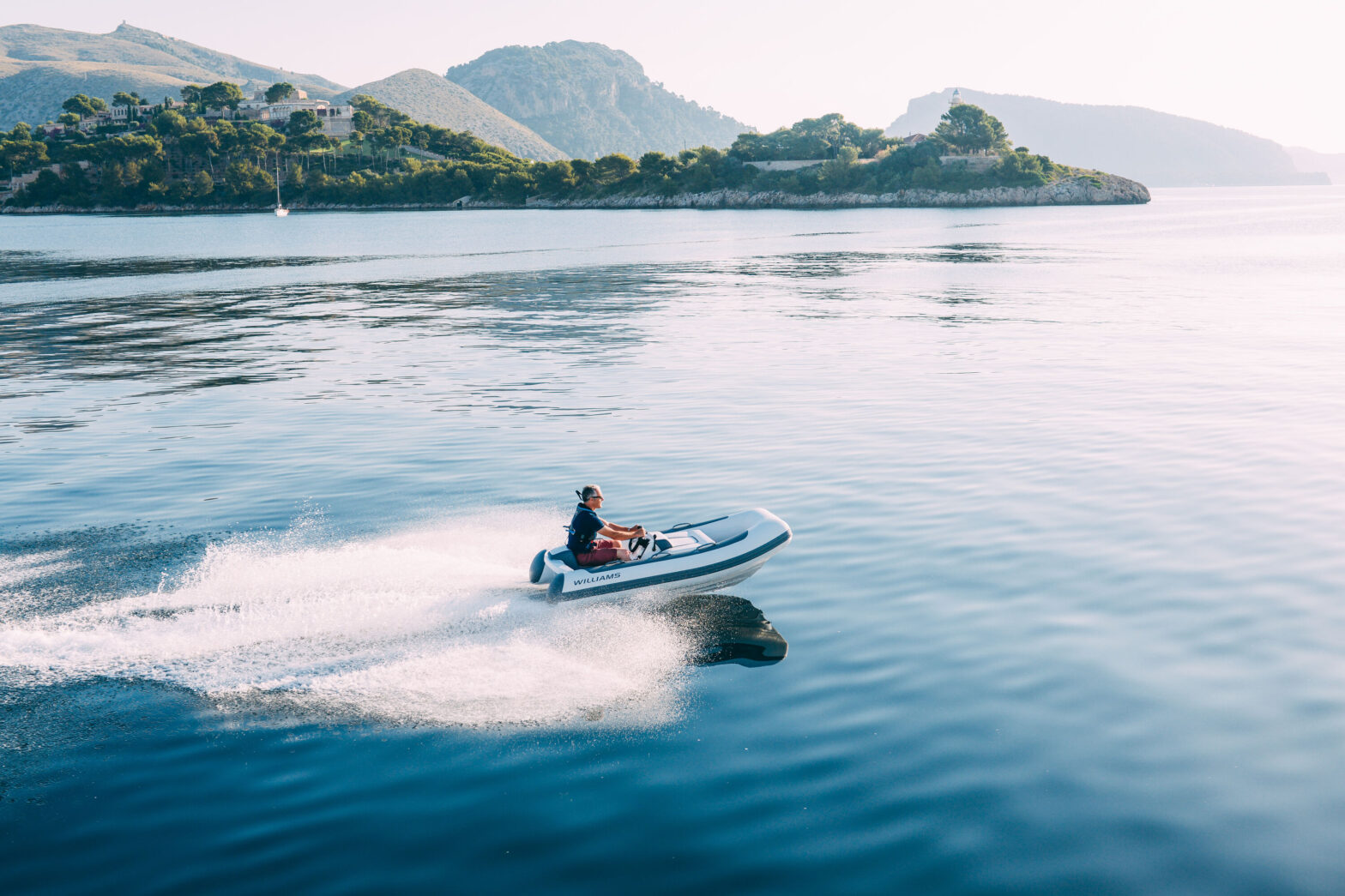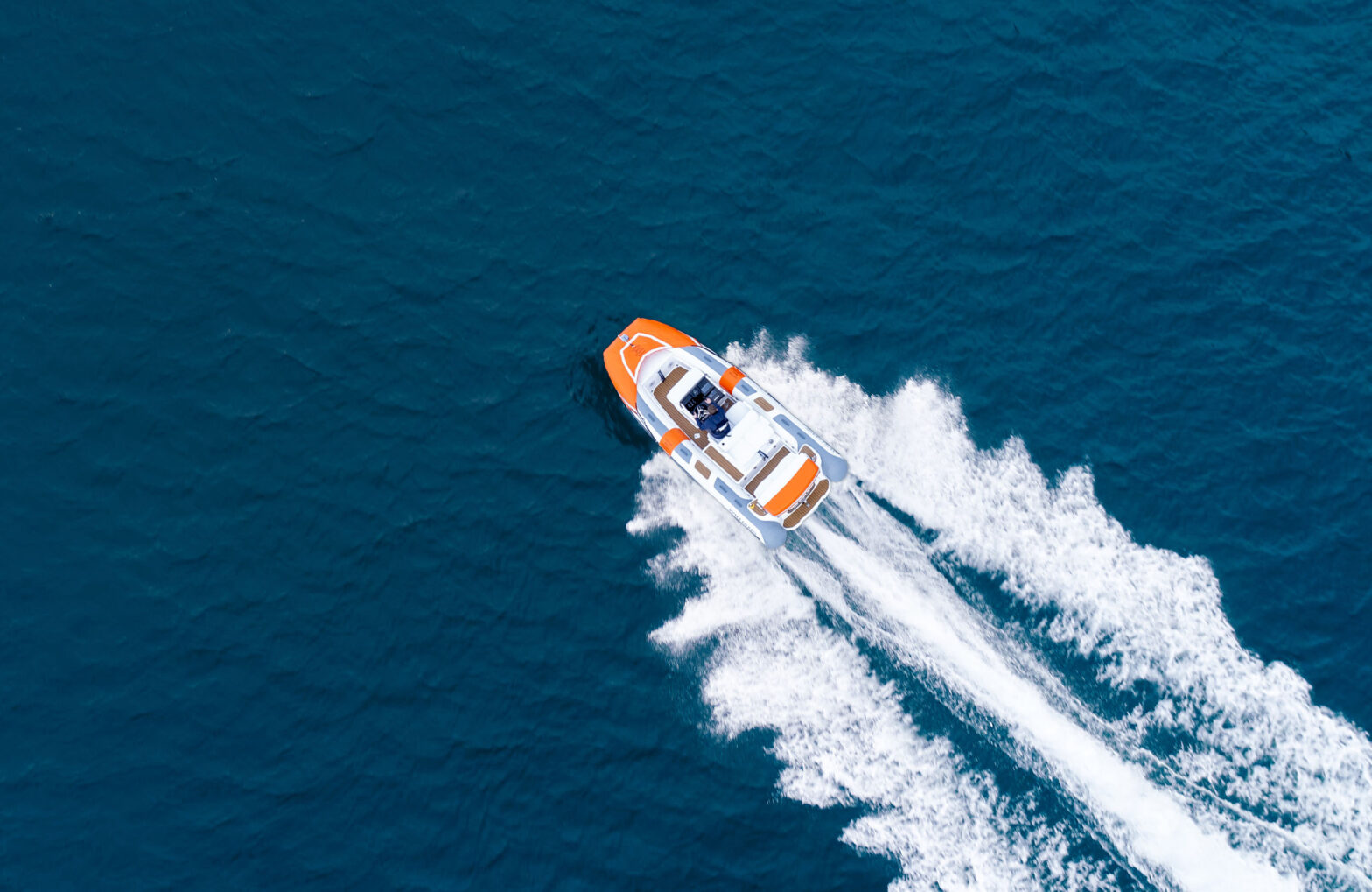The tender is often considered an extension of the parent yacht for both functionality and style. Selecting the right-sized tender can have a big impact on your boating experience, offering a seamless blend of performance, comfort, and luxury.

[Image courtesy of Princess Yachts]
With so many options available, selecting the perfect tender can feel overwhelming. This guide will discuss the key factors to consider when deciding on the best yacht tender to suit you. So, let’s dive in.
A Step-by-Step Guide
- RIB (Rigid Inflatable Boat) has inflatable tubes to provide added cushioning and support.
- Beach Lander, is a boat which has been specifically designed to land on a beach with an easy disembarkment system for guests to use.
- Limousine, a large tender with a primary use of transporting guests (usually under cover) in ultimate style, comfort and luxury.
- SOLAS (Safety of Life at Sea) is a craft which also acts as a rescue boat, and a mandatory requirement for yachts over 500GT.
- Open, a tender which doesn’t have inflatable tubes (a RIB), and is typically matched with larger yachts. These tenders can be designed to be the primary tender for guests but are usually capable of performing added functions as well, such as watersports.
- Classic, stylish tender which matches elegant design with contemporary flair. Often built or inspired by previous generations (such as 1940’s), these boats usually come with a mahogany finish and endless charm.
- Watersports – if you are doing lots of watersports, such as wakeboarding or waterskiing, you may decide to choose a tender which has a high top speed and specially designed hull to create a wake. You may also consider what storage is available for putting your waterskis when they’re not in use.
- Commuting – will the tender be used for long or frequent trips from ship to shore? If the tender is used for transporting guests, and/or by crew to collect provisions, a larger boat with a comfortable, dry ride and easy boarding will be more desirable.
- Fishing or leisure – storage and comfort may be key for longer fishing trips, as well as entertainment and fish finder technology.
- Engine power and fuel capacity for long-distance trips
- Manoeuvrability for docking or in narrow spaces
- Comfort and amenities
- Layout and seating
- Weather protection options
- Entertainment systems and technology
- Alternative fuels – our Yanmar diesel engines can be used with HVO100 fuel which contributes up to 97% less net CO2 compared to standard diesel.
- Diesel vs. Petrol – having a diesel tender means you will only have to carry one type of fuel onboard, whereas petrol powered tenders require a separate supply.
- Life Cycle Analysis – we have completed the LCA for 2 of our products (TurboJet 325 and DieselJet 415) and will look to build on this so you can see the carbon footprint of these models.
- Greenhouse Gas Audit – we have also completed Scope 1 and 2 of our GHG Audit, and you can see our impact in our 2024 Sustainability Report
1. Understanding your space
The main step to consider is how much space you have available to store and launch the tender, whether it’s in the tender garage or on the bathing platform. Most yacht owners prefer to maximise their space and choose the largest tender their yacht can accommodate for added comfort and luxury. At Williams Jet Tenders, our yacht fitment guide makes it easy to find the perfect match for your yacht’s size and needs. A key advantage of jet propulsion is a more compact package compared to a tender with an outboard, making it easier to fit inside a tender garage.

[Image courtesy of Sunseeker]
2. Weight Capacity
Remember that the weight of the tender and the engine must not exceed the weight limits of your yacht’s davit or crane system. You can go for a larger, heavier tender if you have a powerful crane system. When the weight capacity is limited, a smaller tender will be more appropriate.

3. Tender Categories
The primary user of the boat may be a guest, owner or crew, so based on their requirements and usage, it is useful to narrow down your search using the following categories.

4. Functionality of your tender
Next, it is important to think about your unique needs and how the tender will be used.

What to expect
Small tenders, ranging from 2.5m to 3.5m, are perfect for short trips and rapid excursions. They are known to be best for fitting in more compact garages and spaces. Additionally, they are also known for their efficiency during quick jaunts.

Then we have the medium tenders, usually between 3.5m and 5m. These offer versatility for longer periods on the water and are often much better for watersports. They strike a nice balance.

This size range is perfect for people who desire a combination of spaciousness and flexibility for a variety of activities. Additionally, medium tenders can accommodate larger deck areas and have greater weight capacities, which makes them appropriate for transporting more passengers or equipment.

Comfort, convenience, and capacity are the top priorities for large tenders, which are 5 meters and more. These tenders provide additional room and stability for longer journeys, making them appropriate for long-distance cruising. They are, therefore, ideal for anyone who wishes to add more comfort and luxury to their boating experience while taking longer trips, but also popular with crew due to their versatility.
Additional Factors to Consider
Beyond just size, other factors can make or break your tender experience. Consider the following.
Sustainability
Owning a Williams is a joy and we understand our customers requirements to use their tender sustainably. We have come up with a guide to help owners including efficient helming and planning journeys, simple maintenance and not carrying excess weight. Sustainability can also be a factor when buying a tender, and our award winning programme means we are leading the way in the industry.
Conclusion
There is more to selecting the ideal size tender for your boat than simply selecting a model that fits. Practicality, yacht compatibility, and intended use must all be balanced. Smaller tenders are easier to store and move, but larger tenders offer greater room and comfort. Your yacht’s weight capacity, deck area, and launching capabilities will influence decision-making.
For personalised advice and guidance, consult with our technical team at Williams Jet Tenders, who are on hand to advise on yacht fitment for your tender.
Share this story:
In other journals...

29 October, 2025
Planning the Perfect Shore Excursion with Your Yacht Tender

15 September, 2025
Williams MiniJet 280: The Ultimate Compact Yacht Tender


